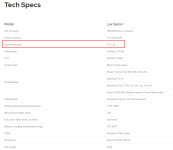This may help you if you want to measure a flash trigger voltage.
Flash Trigger Voltage.
Trigger voltage is measured between centre pin and edge contact on the flash's hot-foot.
To check an unknown trigger voltage, you'll need a digital multimeter. For most reliable result, the input impedance of the meter should be 10 mohm, or higher.
To measure, put fresh batteries in the flash you want to check, and charge the flash until the “ready” lamp (or equivalent) is lit. Then set the range selector on the meter to the most sensitive DC range. To find the right range, start with the highest DC range and go downwards until the meter indicates you are out of range. Then back up one step. This is the most sensitive range. You should now be able to read the flash's trigger voltage from the meter's display.
You meter the voltage between the centre pin and the edge contact. If there is more than one pin below the flash, it is the centre one you're interested in. It will make contact with the large round contact in the centre of the camera's hot-shoe. The edge contact may be a small metal square recessed in the hot-foot, or something larger. It is designed to make contact with the metal of the mounting bar on the edge of the camera's hot-shoe. You always connect the negative probe (black on most meters) to the edge contact, and then connect the positive probe (red on most meters) to the centre pin.
Measuring voltage with a digital multimeter. Black probe on edge contact, red probe on centre pin.
Prior to metering, I've set the meter to use the range 0 to 20 volts. I use my hands to connect the points of the positive and negative probes to the metal of the Speedlight's hot-foot.
Alternatively, you can measure the voltage between the centre (+) and edge (-) of the pc-socket.
Note that older analog voltmeters may have a low input impedance which may result in a voltage drop inside the meter. This will result in a too low reading. For best results, use a digital meter with a impedance of 10 mohm or more.
Sometimes, the gap between the foot of the flash and the screw for fixing it in the hot-shoe may be too narrow for the meter's probe to reach the metal of the edge contact. If the flash has a pc-socket, you can alternatively measure the trigger voltage from the pc-socket.
You connect the negative probe (black on most meters) to the edge, and the positive (red on most meters) to the centre of the pc-socket.
In addition to the trigger voltage, the polarity of the flash is important. All modern cameras expects the centre pin of the flash to be positive and the edge contact to be negative.
If things are the other way around (reverse polarity), even a very low voltage may cause harm. If the unit has reverse polarity, you will see this by the voltage displayed as a negative number (a minus-sign is placed in front) on the display of a digital multimeter. Never use a flash with reverse polarity on a modern camera!

